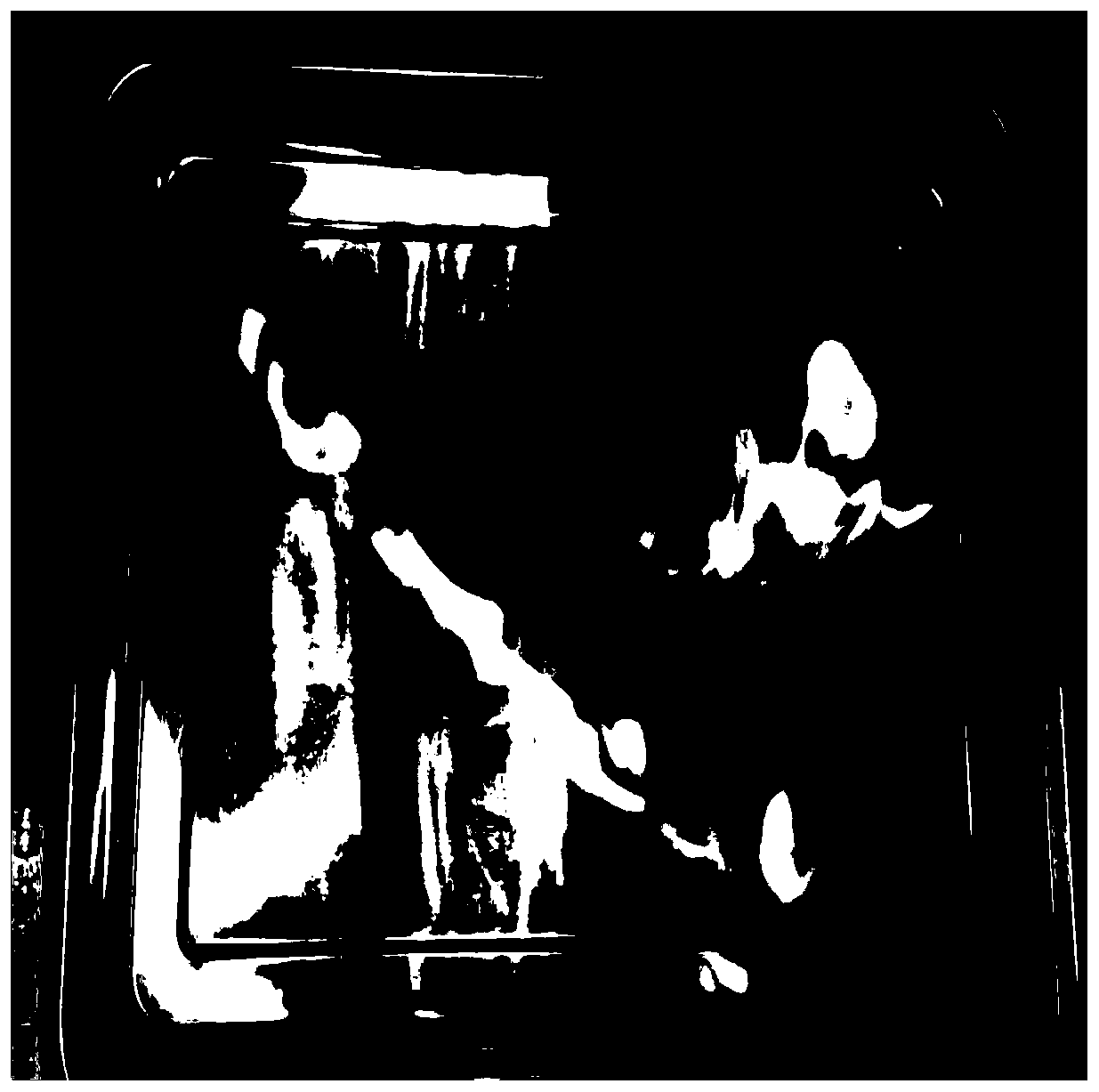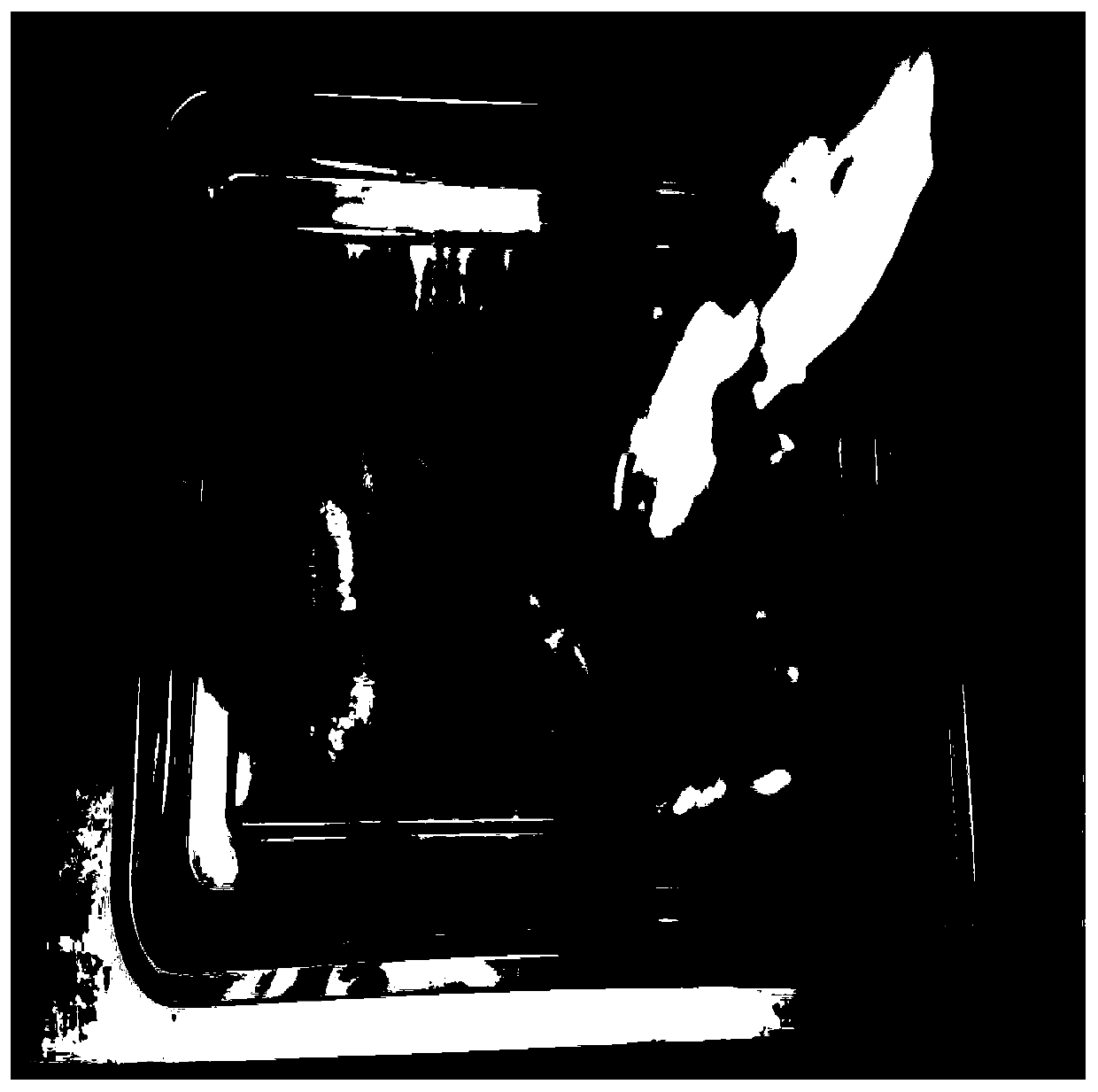Sterilization method of coconut inflorescences
A sterilization method and inflorescence technology, which are applied in horticultural methods, botanical equipment and methods, horticulture, etc., can solve the problems of increased test costs, cumbersome processing steps, and damage to explants, and achieve good disinfection and sterilization effects. Sterilization efficiency and damage reduction effect
- Summary
- Abstract
- Description
- Claims
- Application Information
AI Technical Summary
Problems solved by technology
Method used
Image
Examples
Embodiment 1
[0046] A method for sterilizing coconut inflorescences, comprising the steps of: selecting unopened coconut inflorescences with spathes, putting them into a tray, evenly spraying mass concentration of 70% ethanol at the incision of coconut inflorescences and igniting them. After the flame was extinguished, evenly spray the mass concentration of 70% ethanol at the incision of the coconut inflorescence again and ignite it, repeat this 4 times, the spraying amount of ethanol is 18ml each time, sterilize the flower spike inside the coconut inflorescence, and wait for the flame to go out Finally, the spathe was cut open, and the inner flower spike material was taken out for the inoculation test.
Embodiment 2
[0048] A kind of sterilization method of coconut inflorescence, comprises the steps:
[0049] A. Pre-sterilization:
[0050] Select unopened coconut inflorescences with spathes, wash them with 73% ethanol for 1.5 minutes, soak them in the antioxidant solution for 20 minutes, wash them again with 73% ethanol to remove the residual antioxidant solution, and use Drying with sterile wind; wherein, the antioxidant solution is mixed with 1g / L citric acid and 1g / L ascorbic acid by mass concentration;
[0051] B. Dry sterilization:
[0052] (1) put the coconut inflorescence through pre-sterilization in the tray;
[0053] (2) Evenly spray mass concentration to the inside of the tray and the kerf of coconut inflorescences and ignite it with 80% ethanol. The amount of ethanol sprayed is 22ml. After the flame is extinguished, spray mass concentration again with 80% ethanol and ignite. Repeat 4 times like this ;like Figure 1~4 shown;
[0054] (3) When lighting for the 4th time, put t...
Embodiment 3
[0057] A kind of sterilization method of coconut inflorescence, comprises the steps:
[0058] A. Pre-sterilization:
[0059] Select unopened coconut inflorescences with spathes, wash them with 70% ethanol for 2 minutes, soak them in the antioxidant solution for 25 minutes, wash them again with 70% ethanol to remove the residual antioxidant solution, and use no Drying with bacterial wind; wherein, the antioxidant solution is mixed with 1g / L citric acid and 1g / L ascorbic acid at a mass concentration;
[0060] B. Dry sterilization:
[0061] (1) put the coconut inflorescence through pre-sterilization in the tray;
[0062] (2) Evenly spray mass concentration to the inside of the tray and the kerf of coconut inflorescences and ignite it with 70% ethanol. The amount of ethanol sprayed is 18ml. After the flame is extinguished, spray mass concentration again with 70% ethanol and ignite, repeat 4 times like this ;The burning time of each flame is >2min;
[0063] (3) When lighting fo...
PUM
 Login to View More
Login to View More Abstract
Description
Claims
Application Information
 Login to View More
Login to View More - Generate Ideas
- Intellectual Property
- Life Sciences
- Materials
- Tech Scout
- Unparalleled Data Quality
- Higher Quality Content
- 60% Fewer Hallucinations
Browse by: Latest US Patents, China's latest patents, Technical Efficacy Thesaurus, Application Domain, Technology Topic, Popular Technical Reports.
© 2025 PatSnap. All rights reserved.Legal|Privacy policy|Modern Slavery Act Transparency Statement|Sitemap|About US| Contact US: help@patsnap.com



